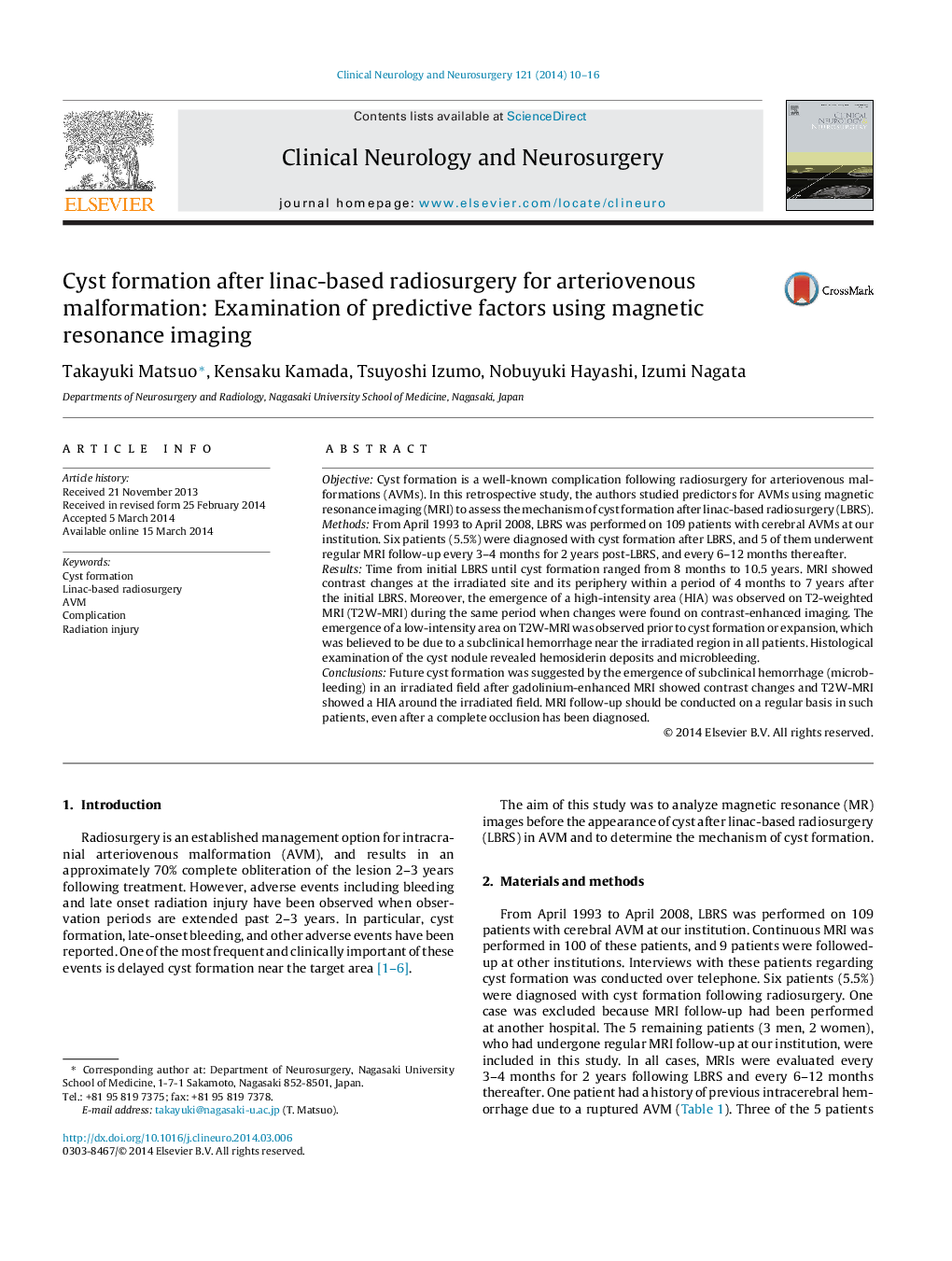| Article ID | Journal | Published Year | Pages | File Type |
|---|---|---|---|---|
| 3040323 | Clinical Neurology and Neurosurgery | 2014 | 7 Pages |
ObjectiveCyst formation is a well-known complication following radiosurgery for arteriovenous malformations (AVMs). In this retrospective study, the authors studied predictors for AVMs using magnetic resonance imaging (MRI) to assess the mechanism of cyst formation after linac-based radiosurgery (LBRS).MethodsFrom April 1993 to April 2008, LBRS was performed on 109 patients with cerebral AVMs at our institution. Six patients (5.5%) were diagnosed with cyst formation after LBRS, and 5 of them underwent regular MRI follow-up every 3–4 months for 2 years post-LBRS, and every 6–12 months thereafter.ResultsTime from initial LBRS until cyst formation ranged from 8 months to 10.5 years. MRI showed contrast changes at the irradiated site and its periphery within a period of 4 months to 7 years after the initial LBRS. Moreover, the emergence of a high-intensity area (HIA) was observed on T2-weighted MRI (T2W-MRI) during the same period when changes were found on contrast-enhanced imaging. The emergence of a low-intensity area on T2W-MRI was observed prior to cyst formation or expansion, which was believed to be due to a subclinical hemorrhage near the irradiated region in all patients. Histological examination of the cyst nodule revealed hemosiderin deposits and microbleeding.ConclusionsFuture cyst formation was suggested by the emergence of subclinical hemorrhage (microbleeding) in an irradiated field after gadolinium-enhanced MRI showed contrast changes and T2W-MRI showed a HIA around the irradiated field. MRI follow-up should be conducted on a regular basis in such patients, even after a complete occlusion has been diagnosed.
